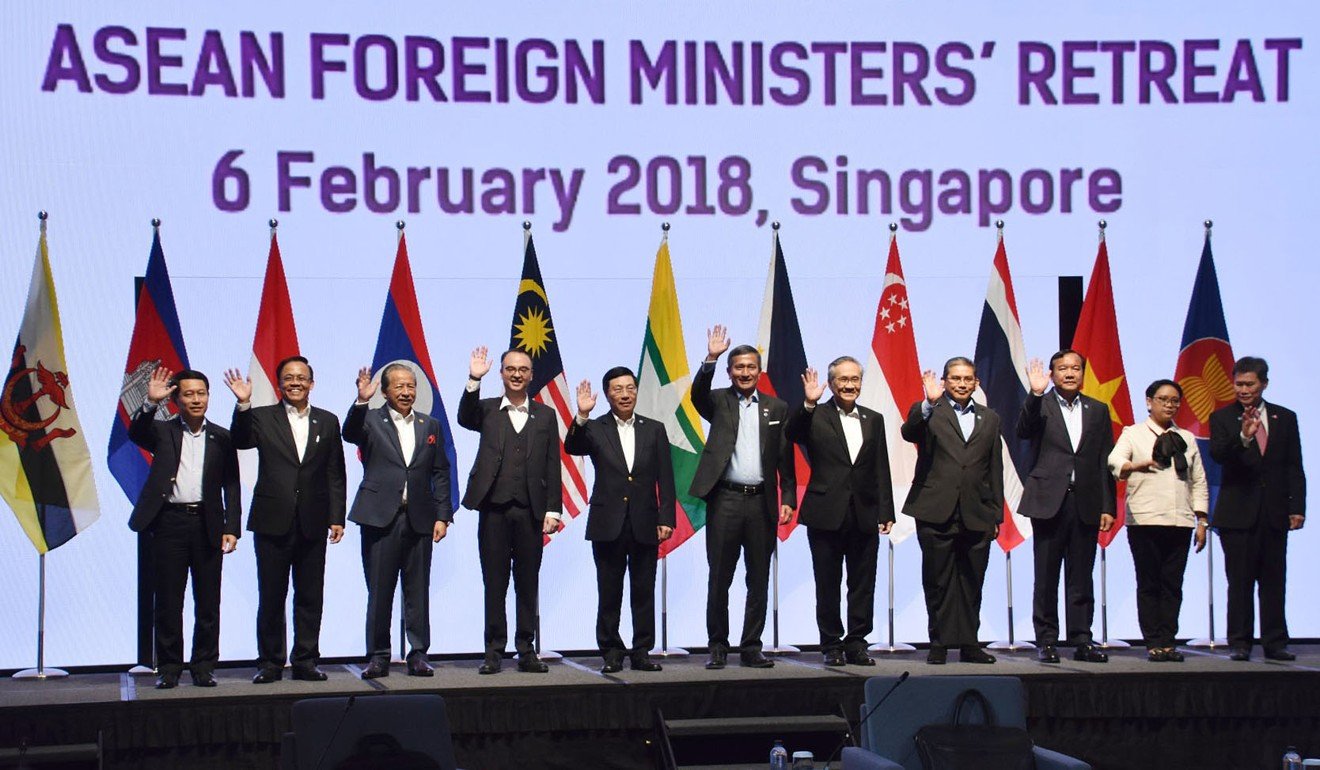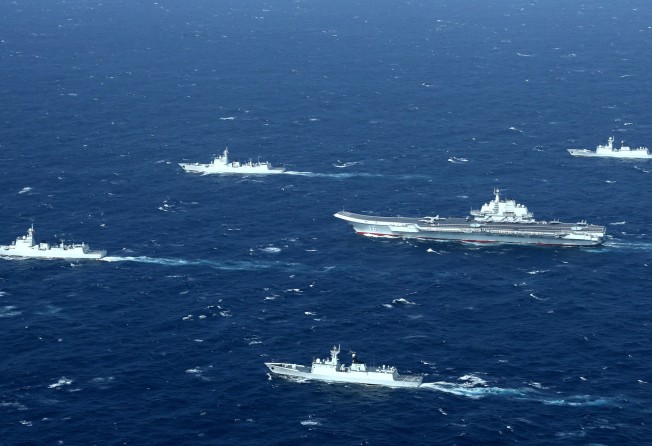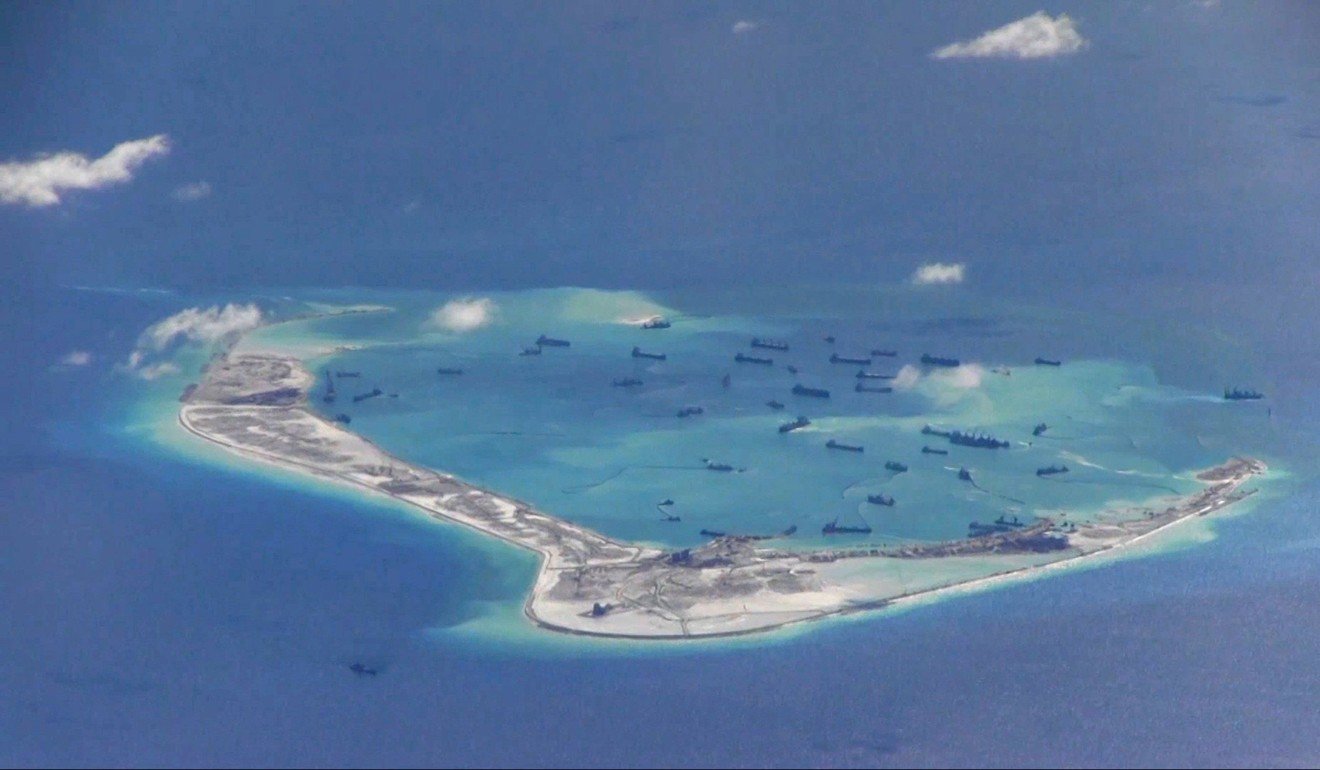
Troubled waters ahead for code of conduct in the South China Sea
Asean needs to resolve complex and pressing issues before nations can agree on rules to help ease maritime disputes in the South China Sea, writes Collin Koh

The chairman’s press statement at the latest Asean foreign ministers retreat held in Singapore could hardly be more timely where it concerns disputes in the South China Sea.
Paragraph 11 of the four-page document dedicates substantial attention to the disputes. Its wording in part borrows much of the standard phrases from past documents and is largely conciliatory in tone, including ministers embracing “practical measures” aimed at building confidence to help ease disputes.
Yet, at the same time, the statement flagged the bloc’s collective unease over ongoing developments in disputed areas of the South China Sea.
It noted the “concerns expressed by some ministers on the land reclamations and activities in the area, which have eroded trust and confidence, increased tensions and may undermine peace, security and stability in the region”.
The proposed solution it suggested would not come as any surprise to observers of Asean and matters relating to the South China Sea.
The ministers duly “reaffirmed the need to enhance mutual trust and confidence, exercise self-restraint in the conduct of activities and avoid actions that may further complicate the situation”.
It went on to say that all sides should “pursue peaceful resolution of disputes in accordance with international law, including the 1982 UNCLOS [United Nations Convention on the Law of the Sea].”

Amid the bonhomie between Asean and China, reducing tensions evident before a UN panel ruled on the legitimacy of China’s claims to the waters in July 2016, the underlying problems still remain up for deeper discussion between Beijing and the 10-member regional bloc.
Now that the “honeymoon” is over following the adoption of the code of conduct framework, the real work begins to iron out the details. Through this latest statement, Asean foreign ministers sought to work towards “an effective COC on a mutually-agreed timeline”.
This timeline is, however, tenuous at best.
In recent years, a number of South China Sea observers have pointed out that it is by no means certain that a code of conduct will eventually materialise. That is a pessimistic scenario for sure, but let us assume that the code will eventually be promulgated, perhaps not without some potholes encountered in the arduous journey of formal negotiations.
The issue is how exactly how effective it will be.
Expediting the negotiations can be motivated in a few ways – either because all parties truly commit to the code out of goodwill, or because some tumultuous events arise unexpectedly in the South China Sea, compelling the parties in a knee-jerk reaction to produce a code, more for consumption by the international community, notwithstanding how suboptimal the document may be.
The latter “reactive” scenario is a plausible one.
Talks about the code started only after a major incident happened in the Mischief Reef back in the 1990s, despite the fact that prior to the event there had been disturbing actions undertaken by the claimants and that Asean and China did not conclude that a code was in fact necessary. But as reactive it may be, ultimately having a code serves the interest of both Asean and China. For the regional bloc, the code could be held up as a shining example of the continued relevance of Asean in the regional security architecture. Beijing would also want the code to justify its rejection of external interference in South China Sea disputes.
All parties converge essentially on one common objective, which is to demonstrate to the international community that they could, on their own accord, manage, if not settle, South China Sea disputes. However, there is no way to exclude parties outside the region from operating in the South China Sea, given that this semi-enclosed maritime domain serves some of the most critical arteries for global economic well-being. Ensuring good order in the waters of the South China Sea is not just the responsibility of surrounding governments, but the international community writ large.

It is difficult to envisage that the US Navy’s freedom of navigation operations would cease because of the code, or that other players such as Australia, India and Japan would not engage in their usual naval outreaches to the region, engaging their Southeast Asian partners in bolstering maritime security ties. In such a context, any of the South China Sea claimants could choose to undertake measures in the name of “self defence”, including further sprucing up existing infrastructure, even if no additional land reclamation is carried out.
All such activities could be arbitrarily deemed “provocative” by any of the parties and other stakeholders in the South China Sea. Such a problem could be anticipated in deeper discussions on the code. The devil lies in the definition of militarisation, besides other pertinent issues related to whether the code should be binding (legally or otherwise), the geographical scope of coverage and also the prospect of opening the code for participation by other countries, which is likely to encounter significant differences between the negotiating parties.
Given the commitment to the process, all parties should aim to take as long as required to iron out differences over these issues, as well as anticipated problems related to compliance, verification and enforcement, to produce a truly effective code to every party’s satisfaction. Failing that, if for political expediency the code is rushed for promulgation, a suboptimal document will be all that remains, further undermining the common objective of demonstrating the ability of Asean and China to effectively manage maritime disputes.
Swee Lean Collin Koh is a research fellow at the Maritime Security Programme at the S. Rajaratnam School of International Studies based at Nanyang Technological University in Singapore